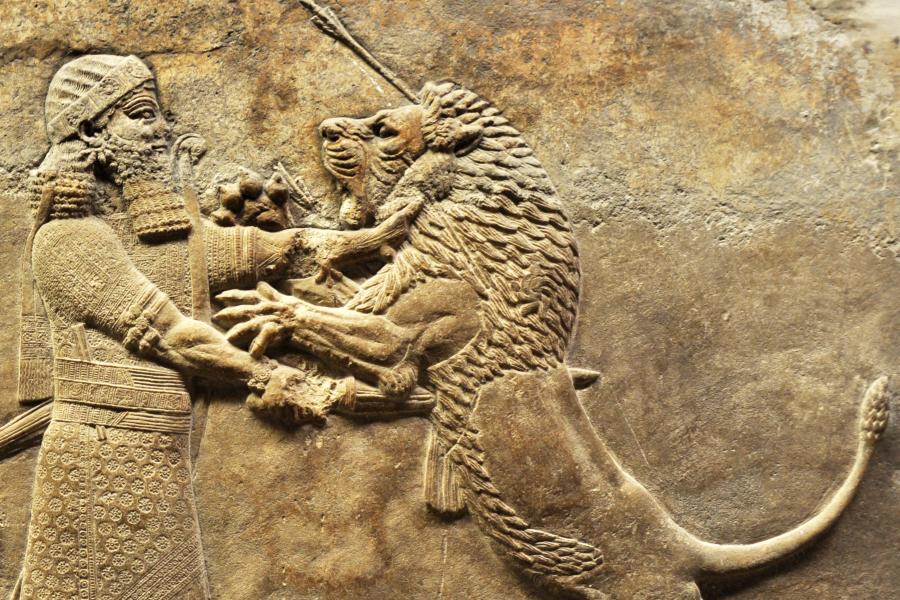The heart of a wounded lion is pierced by the Emperor of the Universe's sword, c. 645–635 BCE

Date: c. 645–635 BCE
Creator of the image: Unknown Assyrian sculptor Date of the image creation: c. 645–635 BCE Medium: Limestone relief Person depicted: King Ashurbanipal King Ashurbanipal (c. 668–627 BCE) was the last strong king of the neo-Assyrian Empire. The empire’s 1,500-year period of dominance came to an end shortly after his death, crumbling into civil war due to the age-old problem of imperial overreach. This limestone relief once decorated Ashurbanipal’s royal place in the capital city of Nineveh, in present day Iraq. This image is taken from a series of larger images portraying a lion hunt. The reliefs, which were originally painted in bright colours, are carved with much skill to depict the dramatic events with a stylized yet ancient naturalism. In Ashurbanipal’s Assyria, the Asiatic lion was considered a symbol of the cruelty of nature, with the hunt representing the king’s dominance over nature, and reinforcing his position as protector of his people. Curiously, the scene does not take place in the wild, but in a large arena, where lions are placed into a ring and slaughtered by the king before crowds of spectators. The scene depicts lions hounded and speared, filled with arrows, fighting for the lives in a military spectacle. While embodying the cruelty of nature, the dying lions are nevertheless depicted with a certain sense of sympathy and dignity, perhaps stemming from a respect that the warrior culture had towards the beasts. Emotions show on the faces of the dying lions. This detail shows a wounded lion making a final attack against Ashurbanipal, with the king throttling the animal and thrusting his sword into its heart. Taken in its entirely, the relief represents the spectacle of the lion hunt, demonstrating the power and authority of the king, his power over nature and his people. Jumping forward two millennia, this relief was excavated from Nineveh in 1847 by Hormuzd Rassam, a Christian Assyrian archaeologist who became a British subject. The reliefs are now on display at the British Museum. Asiatic lions were hunted to extinction across the vast majority of the territory they once lived in, with a total of 523 Asiatic lions remaining in 2015, mostly in a tiny national park in western India.
Quotes
No quotes found.
Login to add a quote